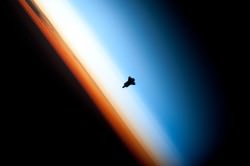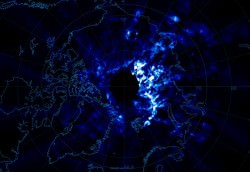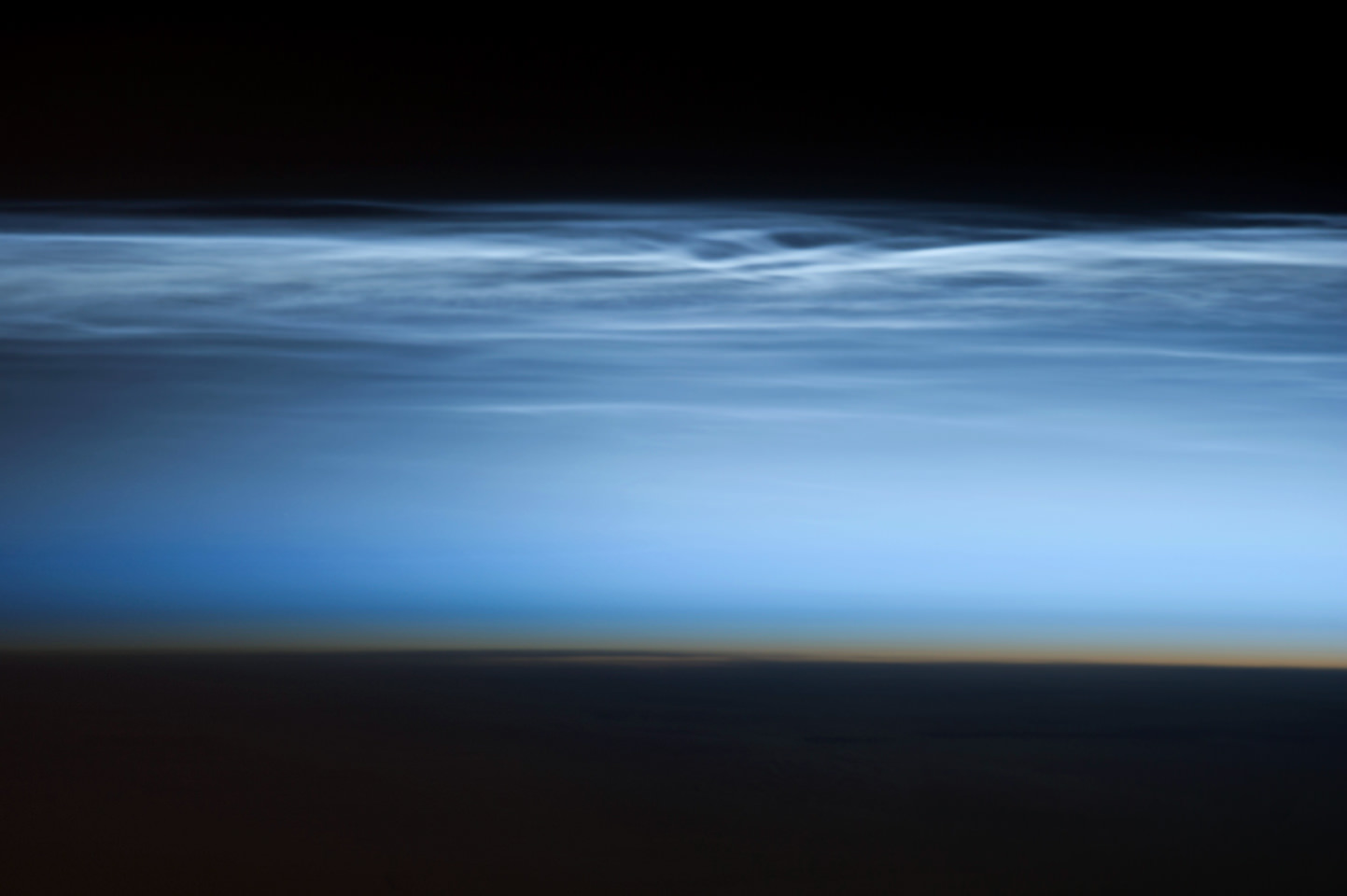Noctilucent clouds, also known as “night shining” clouds imaged by Chris Hadfield. Image credit: NASA
What a perspective! Canadian astronaut Chris Hadfield captured this stunning image of noctilucent clouds above the Pacific South Ocean on January 5th, 2013. Also known as “night shining”, or noctilucent clouds, they form at the edge of much larger polar mesospheric clouds.
 Polar mesospheric clouds form at an altitude of 76 to 85 kilometers, near the boundary between the mesosphere and the thermosphere. The mesosphere is the layer of the atmosphere above the stratosphere (where airplanes fly), and the thermosphere is above that, where solar radiation causes a significant spike in temperature. (The Space Shuttle photo over on the right is positioned right between those two layers).
Polar mesospheric clouds form at an altitude of 76 to 85 kilometers, near the boundary between the mesosphere and the thermosphere. The mesosphere is the layer of the atmosphere above the stratosphere (where airplanes fly), and the thermosphere is above that, where solar radiation causes a significant spike in temperature. (The Space Shuttle photo over on the right is positioned right between those two layers).
 These clouds are typically seen between 70°-75° in latitude, and last for a season of 60-80 days during the late Spring and early Summer. The clouds themselves are made up of ice crystals which measure up to 100 nm in diameter. Scientists are still working out exactly what causes noctilucent clouds; they’re still a bit of a mystery. But their appearance has become more frequent, increasing in brightness and extent, so it’s possible they’re an indication of increasing climate change.
These clouds are typically seen between 70°-75° in latitude, and last for a season of 60-80 days during the late Spring and early Summer. The clouds themselves are made up of ice crystals which measure up to 100 nm in diameter. Scientists are still working out exactly what causes noctilucent clouds; they’re still a bit of a mystery. But their appearance has become more frequent, increasing in brightness and extent, so it’s possible they’re an indication of increasing climate change.
In this photograph, the Sun is below the horizon, and the ground is dark. Those clouds are still partially illuminated by the Sun, and so we see them with this ethereal wispy structure. Hadfield used a Nikon D35 camera with a 400 mm telephoto lens. At the very bottom of the image, you can see the pale orange color of the stratosphere.
Canadian astronaut Chris Hadfield (did I mention he’s Canadian?) launched to the International Space Station on December 19, 2012 to participate in Expedition 34. He has been returning wondering pictures and sharing them on Twitter and Google+.
Original Source: NASA Earth Observatory


Colonel Hadfield is also following in the grand Canadian tradition of Murray Schafer and the World Soundcape Project (Simon Fraser U, 1970s; now morphed into the World Forum for Acoustic Ecology) by documenting the “soundmarks” of life on the space station: https://soundcloud.com/colchrishadfield